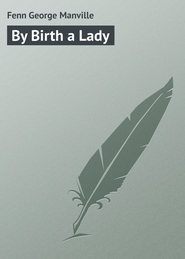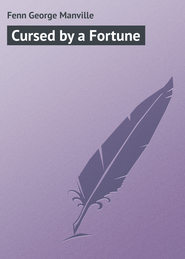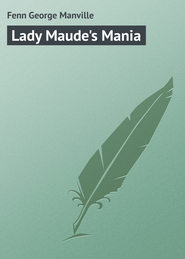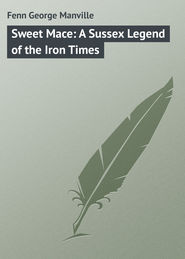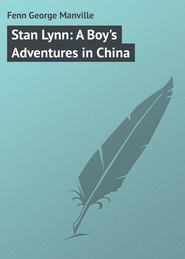По всем вопросам обращайтесь на: info@litportal.ru
(©) 2003-2025.
✖
The Khedive's Country
Настройки чтения
Размер шрифта
Высота строк
Поля
The Baulk wood used as a harrow or roller is drawn by two bullocks, and answers its purpose in smoothing the very sandy soil fairly well.
The Ridging Box, or Baitana, is used for raising low ridges on the flat to retain the water for irrigation purposes.
The Scraper is a box with two handles for levelling high land and earning the sand to lower portions.
The Norag is a massive frame fitted with three or four axles, upon which are fixed steel discs twenty inches in diameter and with four or five discs alternately on each axle. This is drawn by a pair of bullocks over the cut grain till it is threshed out. This implement is, by long proof, most effectual in its action, for when drawn over the grain sheaves it acts in a two-fold way, loosening the ear, or, in the cases of some leguminous crops, the pods – and, of course, vastly helped by the treading of the oxen’s hoofs – so that the grain falls through right to the bottom and is covered by fresh quantities, sheaves, or the like, of the crop that is being threshed. Its second action is that the edges of the discs are constantly bruising and half cutting the straw or stalks, which in a dry season or from want of effective irrigation are often hard and woody. It must be understood that the straw is not used; as in England, for litter, but as the most important food for cattle, and this action of the Norag, with its sharp discs, so bruises and chops up the straw that it becomes softened in its harshness, and far better for the animals to which it is supplied for food. In fact, during the time when it is most supplied to the cattle, which is during the summer or least abundant season, it is a work of necessity to make it more attractive to the animals, this bruising and cutting bringing forth the flavour of such juices as still remain in the plant, making it slightly aromatic and certainly more palatable as food.
We in England have not been ignorant of the value in cattle feeding of endeavouring to give some zest to the coarser kinds of fodder which economy necessitates in the case of the British farmer. Poor hay, musty grain, consequent upon a bad harvest, and unsatisfying chaff, are eaten by unfortunate cattle, which, suffering as it were from Hobson’s choice of having that or none, eat the provender supplied without protest; but Nature resents it for them, and they show it in their poor condition. Of course, in the case of a well-bred horse the matter is different; he snuffs at and blows upon the untempting contents of his manger, and then turns away in disgust from that which his cloven-hoofed companions patiently chew.
But in many a case this damaged grain, hay, or straw has been made attractive by a sprinkle of one of the savoury cattle foods that were invented and imitated some forty or fifty years ago, a portion of the ingredients in one kind consisting of the broken up and stickily sweet locust bean and the contents of its pod, with a dash of the bitter and aromatic fenugreek. But in Egypt, where the rain does so little towards injuring the straw or stalk, such musty fare seldom falls to the lot of the native cattle, while this chopped or bruised straw, the tibn already mentioned, is constantly prepared at the time of threshing by the action of the ingeniously constructed Norag.
No one can see the spot laid down for the reception of the harvest produce in Egypt – so much hard-beaten earth upon which the peas, beans, or grain of various sorts are thrown, ready for the oxen to drag over it this peculiar revolving wheeled or disked implement – without being reminded of the place where the plague was stayed – the threshing-floor of Araunah the Jebusite; nor can he help comparing the native plough, that simple scarifier, with antique agricultural tillers of the soil depicted on the most ancient sculpture or penned in olden manuscripts, as in use by ancient nations as well as by our Saxon ancestors. The ploughs of the West many, many centuries back are almost precisely the same as those we see in the Egypt of to-day, save in the cases where he who drives the plough has to deal with a hard and heavy earth crust far different to the light and sandy soil of Egypt, whose labourer guides a plough with one hand; for in one antique representation of ploughing the labourer steers the agricultural implement with his left and wields in his right a heavy axe, whose purpose is to break the clods prior to the passing of the implement he steers.
Ingeniously constructed, but that is all that can be said of the native threshing machine, for amongst the poorer class cultivators its manufacture is almost inconceivably rough, and clumsy in the extreme. No verbal description could compete with that afforded by the photo-engraving that accompanies these pages, depicting, as it does, the rough, effective implement, its attendants with their quaint forks and rakes, and, above all, the driver, who adds his weight to the farming implement and shoulders his very merciful speed-inducing wand for the benefit of his mixed yoke. This is, of course, an awkward team, but not infrequent; and the Egyptian farmer who first attempted this application of force must have been as eccentric as he was ingenious when he coupled on either side of such a rough pole a patient camel and a native bull.
But somehow, and by a careful division of labour and adjustment of the yoke, the two patient beasts may be seen plodding on round and round the smooth, level, modern representative of the old Biblical threshing-floor. The more regular yoke attached to the Norag, which from its cutting and bruising qualities has been translated by the French “Hache paille,” or chop-straw – this bears astounding similarity to the “whop-straw” shared by the old-fashioned British bucolic with his flail – is seen in the other photograph of the pair of native cows, though very frequently it is drawn by a yoke of oxen, by the big, clumsy buffaloes, or even by a yoke consisting of one of each, the oxen taking the palm for their sturdiness and staying power. This mode of threshing and bruising and chopping the straw is carried out in a similar mode in parts of India.
Here though these old ways are giving place to the use of modern machinery, which is readily adopted by the Egyptian, who naturally does not find in the threshing machine the old failing complained of by the British farmer, to wit, that it bruised and broke up the straw, rendering it unfit to use as thatching or to make into the neat, pale golden trusses once so familiar in the market.
There is, however, an unpleasant feature in the native threshing in connection with the samples of corn. As may be supposed, when the threshing is at an end and the tibn stacked, or rather piled in a heap, leaving the grain to be shovelled up, no amount of winnowing and sifting can remove from it a certain amount of sullying brought about by the constant trampling of the oxen.
This has, in the past, acted inimically to the success of the fine, hard, dry, shot-like grain of Egypt in foreign markets; but in these days of advance not only has the bullock-worked European threshing machine made its way into the Egyptian fields, but it is no uncommon thing for the pleasant hum of the steam thresher to be heard where the ingenious machinery of England is carrying on its untiring labour of threshing out, winnowing, and filling its sacks of grain, as much at home as if it were upon some Yorkshire or Lincolnshire farm.
It will not be out of place, after dealing with the Egyptian tibn, to state here that experienced cultivators have found the advantage of carefully feeding their working bullocks so as to obtain for them the good, sound stamina which will be naturally followed by the best amount of work. This they find by sprinkling amongst the chopped straw or tibn supplied about one-third in weight of beans, not crushed or ground, but either whole or split; for it has been noticed that the draught animals flourish better upon this food than upon bean meal; while the process of splitting, Mr Wallace states, saves the bean from the attack of one of the Egyptian farmer’s minor plagues – the weevil; for, as if governed by some wondrous instinct in their preparations for the continuation of their species, and a desire to ensure for them good wholesome food upon which to feed, these creatures do not lay their eggs in damaged grain.
Of late years many of the European implements have been introduced – Ransomes’ threshers and straw – bruisers, one-way or balance ploughs, harrows, clod-crushers, horse-hoes, Norwegian harrows, spring-tooth cultivators, steam ploughs and cultivators, mowers, reapers, and binders, maize-shellers, seed graders, broadcast-sowing machines, and seed drills.
European ploughs, as they invert the earth, are naturally the most beneficial to the growth of the crop, as by bringing the under-soil to the surface to receive benefit from the sun and air, they greatly improve the root range of the plants.
Steam ploughing is gradually gaining in favour, owing to the scarcity of work-bullocks. A few of the large proprietors have recently purchased plants or entire gear. The scythe for cutting clover has been found, too, a great improvement upon the antique native fashion of pulling by hand, the saving of expense being seventy per cent. But a great drawback to the adoption of European implements is the aversion of the Egyptian farm labourer to any innovation, his want of intelligence in handling what to him appears complicated machinery, and his unwillingness to learn. Here, though, in common justice it must be said that he does not stand alone, for the experiences of the British farmer in most of our counties, and his battles with the pig-headed conservatism of his men, would form an amusing chronicle. The clumsy implement of his forefathers, invented, historians say, some five thousand years ago, is in the native’s eyes perfectly right, and could not be better; and he prefers to go on blistering or hardening his hands in what he looks upon as the good old ways, until he is forced to handle modern machines, and then by very, very slow degrees he begins to see, but not before he has broken many, or put them out of gear. But unfortunately the farm labourer is not the sole offender, as the history of the introduction of mechanism of any kind will tell.
Chapter Sixteen
Much has been written about Egypt and its soil; but in giving here an account of its possibilities and prospects for cultivation in the ways of modern farming, some repetition is necessary. It is fair to say that the soil of Egypt is one of the richest in the world. It is alluvial, ranging from the heavy argillaceous to light loam. It varies, too, in its fertility, and in low-lying lands is frequently impregnated with salt. This is generally owing to want of drainage. When properly treated and flooded with water it soon becomes what is technically known as “sweet,” and available for the growth of crops.
Very rich soils are to be found in the provinces of Menoufieh and Charkieh, while those of Beherah are flat and generally low-lying; but the depth may range up to forty feet!
The preparation of the land for the various crops is not what may be termed difficult, although in the heavy black lands powerful draught oxen are required for the ploughs and other implements. But with irrigation at command, and abundance of moisture becoming more and more common in connection with the modern dams and canals, if the land be hard and baked it can be flooded with water as required, when it quickly becomes in a friable condition, and hence comparatively easy to break up.
In the Delta such conditions are never experienced as frequently are encountered upon the heavy clays in England, where the land becomes so hard that it cannot be tilled.
Possessing the qualities of richness, vast depth of soil, and a glorious climate, it is not surprising that with the steady developments of the Khedive’s country and the safety and security enjoyed under his enlightened rule, accompanied by the example he is setting in his experiments for the advancement of Egyptian agriculture, the price of land has risen enormously. Within the last few years one hundred pounds per acre is quite a common figure; but that which is unreclaimed can still be purchased for from fifteen to thirty pounds. This, of course, necessitates an additional outlay, which is, after all, quite a moderate sum, upon improvements, when it will yield a good return of profit.
The Egyptian agriculturist divides his year into three portions:
Summer, from April 1st to August 1st.
Nileh, from August 1st to December 1st.
Winter, from December 1st to April 1st. But it must be remembered that the Egyptian winter would be better named balmy spring.
As this little work is written primarily for those who take an interest in the progress of a favoured country, and who may possibly be looking towards the East with the eyes of investment, or for a future home where they may lead a Virgilian or bucolic life, it is proposed to give here a simple, business-like account of the various processes and preparations made for the growth and harvesting of the different crops sown in the above seasons: —
Winter Crops: Clover, barley, beans, and wheat.
Summer Crops: Cotton and sugar-cane, and also maize.
Nileh Crop: Maize alone.
Rotation. – A three years’ rotation is the one generally practised, although there is a tendency to limit it to two years.
It would be as well to consider the crops as they succeed each other, beginning with the cotton.
A great deal of interest attaches to the growth of cotton in Egypt. It was largely cultivated by the ancient Egyptians, and its products utilised, but after a time – it is impossible to say how long, possibly during the great changes that took place during incursions, conquests, or change of rulers – its growth died out to such an extent that a few generations back, as an article of utility, its cultivation had pretty well ceased, and cotton was scarcely known, save as a decorative shrub in the gardens of Cairo.
But during the reign of the Khedive’s ancestor, Mehemet Ali, a man of great foresight, full of determination for the advance of his people, he completely grasped the idea that Egypt was one of the most suitable of countries for the cultivation of the cotton tree, and that it ought to be produced in his dominions instead of dependence being placed upon importation from other lands.
In pursuance of this idea, he began to make experiments, testing it, so to speak, by forming plantations. These turned out so well that he proceeded to take further steps, and with great enterprise commenced the cultivation upon a large scale. Many thousands of the Egyptian acres were planted in the lower provinces, and to a far greater extent planting was carried on in the rich lands of Upper Egypt bordering on the Nile.
The little trees responded freely to the Egyptian cultivation; the rich, irrigated soil, yearly replenished by the sediment left by the floods, proved that the ancients were right, and wherever the land was deep the results were most favourable; while where a bad selection had been made, and the soil was shallow and inferior, the return of the pods, or technically bolls, was poor.
The method of its cultivation will be given in extenso farther on, but it will be as well to note here, in regard to the enterprise which turned Egypt into its present state as one of the great cotton-growing countries of the world, that the seed was originally imported from Brazil, though it is undoubtedly a native of Northern Africa; and at the present time the returns are very great.
The preparation of the land for the growth of cotton commences in January. The seed is sown from the middle of February till the middle of March, and the cropping harvested, or picked, about the end of November; while previous to the last picking of the soft woolly pods, clover seed is sown amongst the standing cotton trees.
This, so to speak, stolen crop provides a supply for horses, cattle, and sheep till the end of June; for it must be borne in mind that Egypt is not a land of fields and meadows enclosed by hedgerows; hence grazing for cattle is the result of foresight, and has to be provided as required.
On the land not sown with clover, and at the end of the cotton harvest, after the little trees have been uprooted, a crop of beans is sown, which becomes ready for harvesting in April; and now there is a period in which the agriculturist may take his choice of sowing what may be termed catch crops, or fallowing his land for five months. In this he is guided by position and the facility offered for the disposal of such easy crops as water melons or maize, which can be taken after beans.
It is at the end of October that he begins to think of his main crops, when wheat and barley are sown, to be harvested from the beginning of May to the end of June. Then follows the main crop of maize, which occupies the land from July 15th to November 15th.
Previous to the harvesting of this main crop of maize, clover is again sown, and from this one or two pasturings are obtained before the land is broken up once more for the succeeding important crop of cotton, this completing the rotation.
The sugar-cane has not been given a place in this rotation, as it is principally grown in Upper Egypt for the manufacture of sugar, while we are dealing with the rich lands of the Delta and the farming there. But we may here remark that the Egyptians are as fond of the green sugar-cane as an article of diet as the blacks of the West Indies, who may be seen munching its luscious saccharine at all times and seasons.
There is something more in this among the Egyptians than the gratification of a sweet palate, for it is eaten largely from the great faith of rich and poor alike in its tonic qualities. “Gasab,” or as they pronounce it in Cairo “’asab,” is considered to be one of the greatest restorers for those who from weak health or excess are what we call in modern phraseology “run down” – perhaps as pleasant, plentiful, and economical a medicament as could be used. It is a common sight for the European to see the poor, patient, overladen, and underfed donkeys coming into Cairo every morning heavily laden with the juicy caries that have been grown in the neighbouring fields.
It will be observed in the above rotation that a crop of clover precedes and succeeds the cotton.
We now proceed to a technical statement of the treatment of an Egyptian farm; not merely a description of farming in Egypt, but of the management of a farm based upon the careful observations of one who has passed many years in the Delta and has made the cultivation and cropping of its peculiar soil a thorough life study. In fact, the tracts of land under his superintendence offer themselves as specimens worthy of copying by all who seek to make the land of Egypt profitable and well paying in return for the capital, large or small, that may be invested there. This being said, we at once plunge again in medias res, and, at the risk of being too formal and technical, recapitulate the crops in their order. Cotton.
Followed by Clover, or Beans, or both.
Followed by Fallow, or catch crops of Maize or Water Melons.
Wheat and Barley.
Followed by three months’ fallow, or Maize, main crop, and catch crop of Sesame. Clover – “Fachl” on land after Maize and Clover “Miscowy” after Fallow. Then Cotton.







